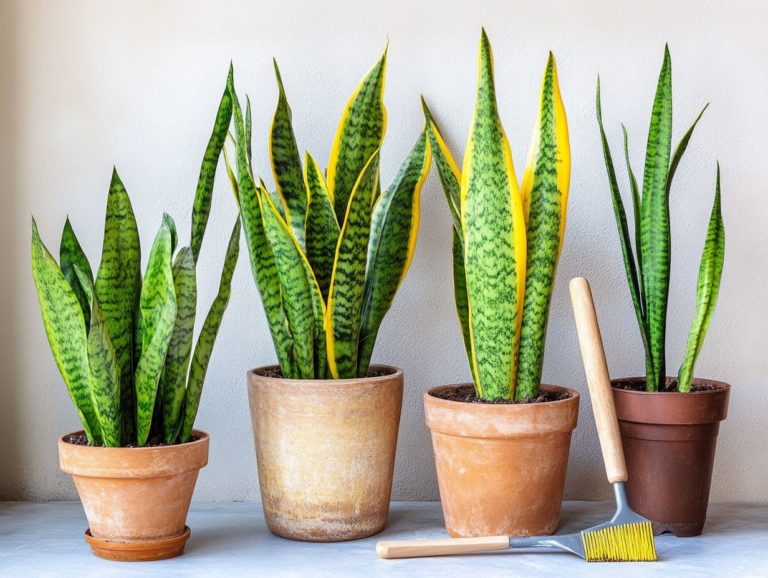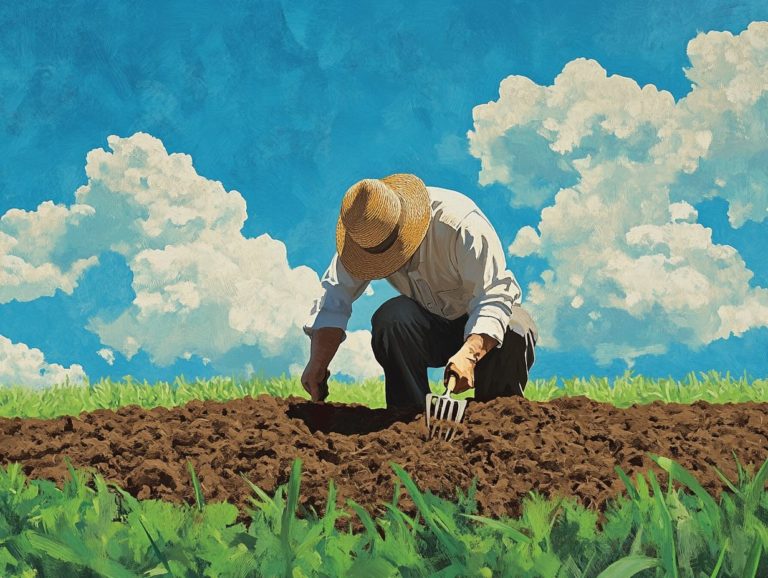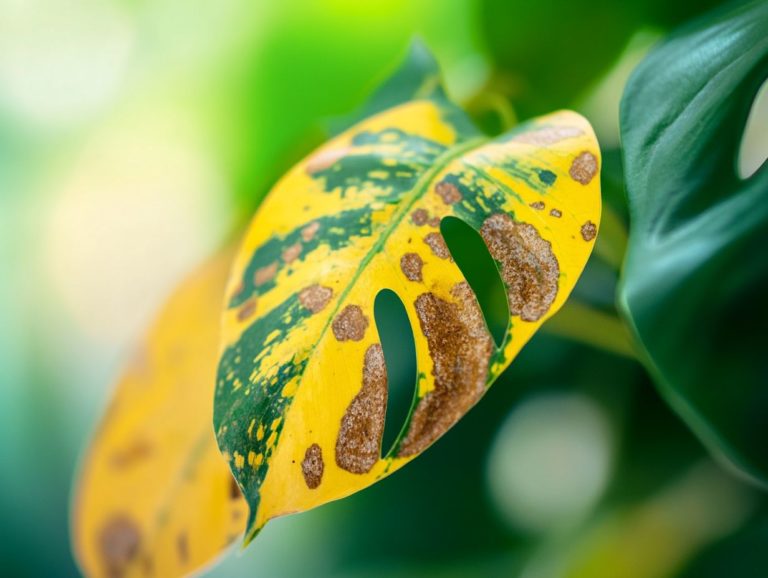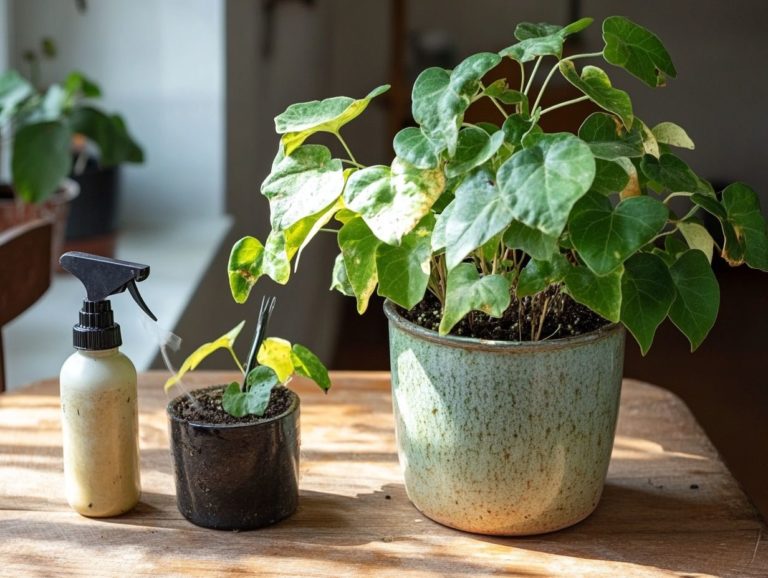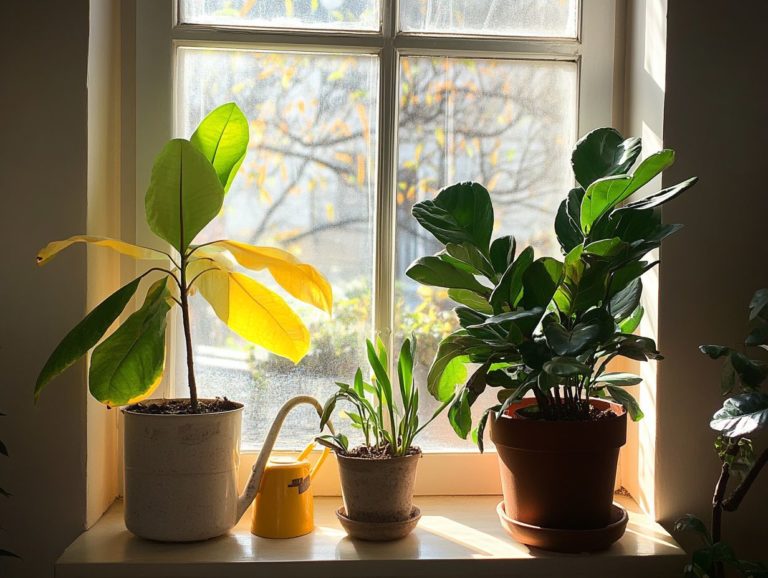Best Practices for Preventing Plant Disease
Healthy plants serve as the cornerstone of any thriving garden or landscape, yet they are not immune to a range of diseases that can undermine their growth and beauty.
This article delves into the common types of plant diseases, their underlying causes, and effective strategies to prevent them. You will discover how to create an optimal environment for your plants, identify early warning signs, and explore natural remedies that can keep your garden flourishing.
Engage with us to uncover best practices for preventing plant diseases and ensuring your greenery remains vibrant and healthy.
Contents
- Key Takeaways:
- Understanding Plant Diseases
- Preventing Plant Diseases
- Maintaining a Healthy Environment for Plants
- Identifying and Addressing Early Signs of Disease
- Using Natural Remedies for Disease Prevention
- Frequently Asked Questions
- What are the best practices for preventing plant disease?
- How does crop rotation help prevent plant disease?
- Why is sanitation important in preventing plant disease?
- Can using disease-resistant plants help prevent plant disease?
- How can maintaining proper soil health help prevent plant disease?
- Are there any natural methods for preventing plant disease?
Key Takeaways:

- Regularly inspect your plants for signs of disease. Don t wait! Catch any issues early to prevent further spread.
- Maintain a healthy environment by practicing proper watering and fertilization techniques, while controlling pests and weeds.
- Consider using natural remedies as a preventative measure, such as companion planting and incorporating beneficial insects into your garden.
Understanding Plant Diseases
Understanding plant diseases is essential for gardeners striving to maintain optimal plant health and maximize crop productivity. These diseases are caused by a range of pathogens including fungi, bacteria, and viruses.
They can profoundly affect the growth and yield of your crops, such as tomatoes and potatoes. By grasping the key principles of plant disease study and the intricacies of disease development, you can implement effective management strategies that minimize disease occurrence and bolster your crops’ resistance.
Common Types and Causes
Common plant diseases, such as blight, often stem from fungi or bacteria, resulting in considerable crop losses in various gardening scenarios. These detrimental infections present themselves through a range of symptoms, including wilting leaves, darkened spots, and premature leaf drop.
It’s essential to understand how environmental conditions like high humidity, excessive rainfall, or poor soil drainage can foster these pathogens. For instance, powdery mildew thrives in warm, dry conditions, while root rot becomes a problem in waterlogged soils.
By adopting sound gardening practices such as crop rotation, which means changing the types of plants grown in a specific area each year, ensuring proper spacing for air circulation, and selecting resistant plant varieties, you can significantly mitigate the risk of infection and safeguard the overall health of your plants. For more tips, check out this guide on how to maintain plant health to prevent pests.
Preventing Plant Diseases
Preventing plant diseases is crucial for maintaining sustainable gardening practices. It enables you to bolster crop resistance while minimizing reliance on chemical interventions.
By adopting effective disease management strategies like selecting resistant varieties, practicing crop rotation, and ensuring proper sanitation, you can dramatically reduce the chances of disease outbreaks in your garden. Additionally, best practices for quarantining new plants can further enhance your garden’s health. These proactive measures lead to healthier plants and foster long-term agricultural sustainability, making your gardening efforts both effective and environmentally responsible.
Effective Strategies and Practices

Effective strategies for managing plant diseases involve a variety of cultural methods and gardening techniques designed to enhance disease resistance in your crops. Implementing practices such as optimal crop spacing improves air circulation around your plants, reducing humidity and minimizing the risk of fungal infections.
Choosing hand watering over overhead irrigation allows you to apply moisture directly where it s needed. This prevents water from pooling on leaves and reduces the chance of disease spread. Using organic mulch helps conserve soil moisture and serves as a barrier against soil-borne pathogens.
By adopting these smart practices, you can truly transform your garden into a thriving paradise! These thoughtful strategies greatly influence disease dynamics and promote overall plant health, ensuring your crops thrive in a more sustainable environment. Additionally, implementing indoor plant pest prevention tips can further enhance your gardening success.
Maintaining a Healthy Environment for Plants
Maintaining a healthy environment for your plants is essential for preventing disease and ensuring the overall success of your garden. This approach fosters robust growth while minimizing the risk of disease development.
Use proper irrigation techniques like drip irrigation to provide your plants with necessary nutrients and moisture. This method minimizes conditions that favor soilborne pathogens.
Thoughtful placement of your plants can significantly lower humidity levels, which is crucial for preventing diseases such as blight.
Proper Watering and Fertilization Techniques
Proper watering and fertilization techniques are crucial for fostering vibrant plant growth and reducing the risk of disease in your garden.
Choose drip irrigation over traditional hand watering for significant advantages. This method conserves water and delivers moisture directly to the roots, promoting optimal hydration while reducing evaporation losses making it an environmentally conscious choice!
Implement targeted nutrient management through the use of fertilizers to enhance plant health, ensuring they receive essential nutrients during critical growth stages. Well-nourished plants are better equipped to fend off pathogens, ultimately enhancing the resilience and productivity of your garden.
Controlling Pests and Weeds
Controlling pests and weeds is a crucial aspect of maintaining healthy plants and achieving your gardening goals. Unchecked infestations can leave your garden vulnerable to diseases.
Effective management strategies are vital for creating a thriving garden. Use a method that combines different pest control strategies to implement a range of control measures, including biological, cultural, and mechanical practices.
Incorporating the right gardening tools can significantly boost your efforts. For instance, using sharp hoes and trowels allows you to swiftly remove weeds before they compete with your plants for nutrients and water.
Practices like crop rotation and companion planting can provide natural pest deterrents, fostering resilience against diseases and promoting a healthier gardening ecosystem.
Identifying and Addressing Early Signs of Disease
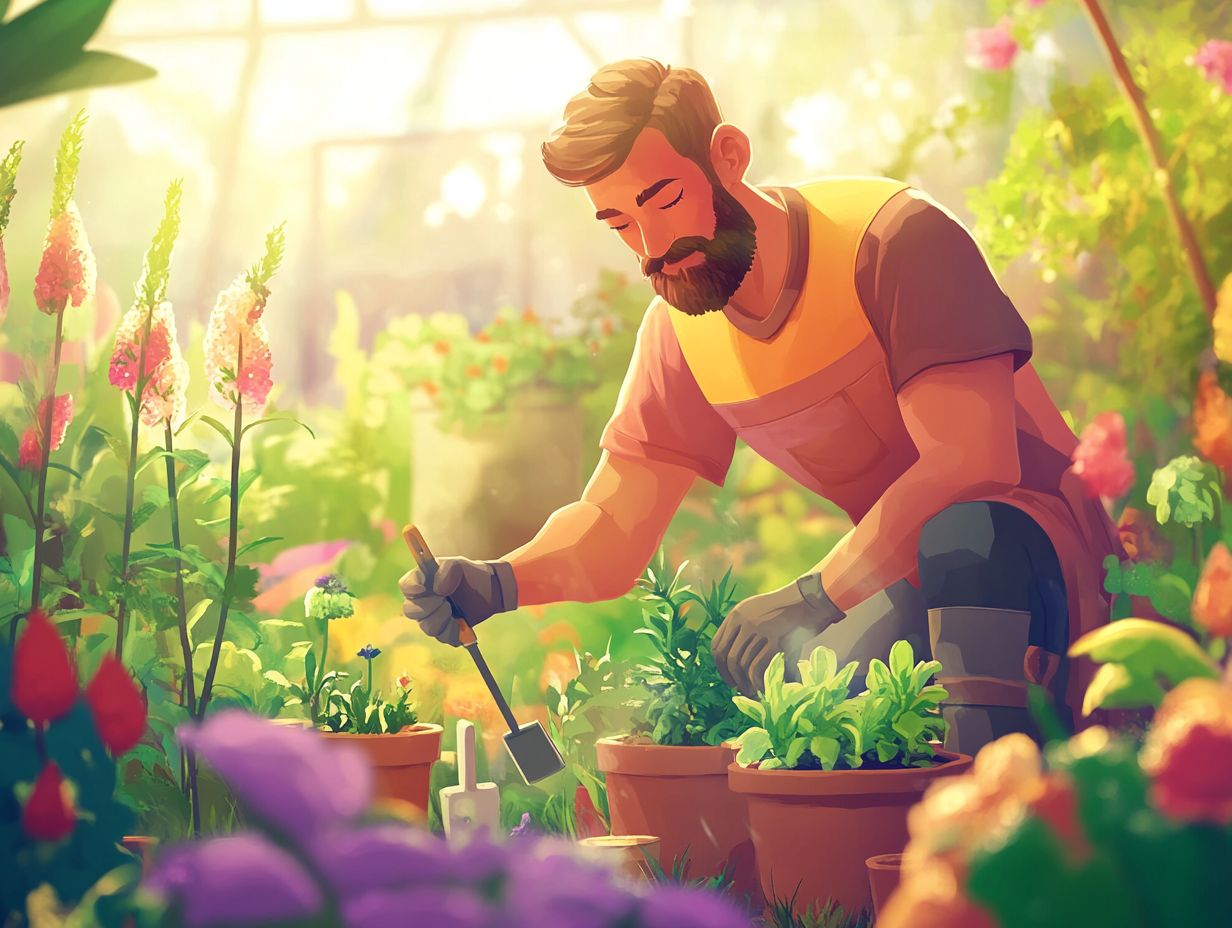
Identifying and addressing early signs of disease is essential for effective disease management and sustaining plant health. Detecting symptoms like wilting, discoloration, or unusual growth patterns early on allows you to intervene before the infection rate spirals out of control!
By employing a meticulous diagnosis process, you can accurately identify the specific disease troubling your plants. This enables you to implement targeted management strategies to minimize impact on crop productivity.
Symptoms to Look Out For
When managing plant health, it s crucial to remain vigilant about the symptoms displayed by infected plants. This vigilance can significantly impact your diagnostic process.
Recognizing early signs like yellowing leaves, wilting, or unusual spots allows you to take proactive measures to mitigate damage and promote recovery. Different diseases may show distinct symptoms; for instance, fungal infections often lead to powdery mildew or root rot, while bacterial infections might manifest as leaf blight.
Understanding these variations aids in accurate identification and enhances your ability to communicate effectively with gardening experts. What may seem like minor discoloration could hint at a more serious issue. This underscores the importance of continuous observation and timely intervention to safeguard your plants’ health!
Using Natural Remedies for Disease Prevention
Opting for natural remedies in disease prevention presents you with an eco-friendly alternative to traditional approaches. This enables you to maintain plant health while significantly reducing chemical exposure.
Techniques like compost application and companion planting are not just effective; they are cultural practices that actively deter pathogens and enhance disease resistance. By integrating these alternative methods into your gardening routine, you create a healthier garden that champions sustainable agriculture while also being aware of common diseases in propagated plants and their prevention.
Alternative Methods for Treating and Preventing Disease
Alternative methods for treating and preventing disease are becoming increasingly popular among gardeners who seek sustainable practices to enhance plant health.
Look into various natural remedies to manage common plant diseases while nurturing a healthy ecosystem. Take neem oil, for example; it s a versatile powerhouse that not only prevents fungal infections but also keeps pests at bay.
Similarly, by introducing beneficial microorganisms into the soil, you can create a resilient garden environment that naturally suppresses disease outbreaks.
You might also want to try homemade treatments like garlic spray and baking soda solutions, which are gaining traction for their organic appeal and impressive effectiveness. As your interest in organic gardening techniques grows, so will your appreciation for how these disease management strategies can lead to thriving plants and a more sustainable gardening experience.
Frequently Asked Questions

What are the best practices for preventing plant disease?
Some of the best practices include crop rotation, practicing good sanitation, using disease-resistant plants, and maintaining proper soil health.
How does crop rotation help prevent plant disease?
Crop rotation helps prevent plant disease by disrupting the life cycle of pathogens. This reduces their populations and prevents them from building up in the soil.
Why is sanitation important in preventing plant disease?
Sanitation is crucial because it helps remove or kill potential disease-causing organisms in the environment, reducing the risk of infection for plants.
Can using disease-resistant plants help prevent plant disease?
Yes, using disease-resistant plants can help prevent plant disease. They possess natural genetic resistance to certain diseases, making them less susceptible to infection.
How can maintaining proper soil health help prevent plant disease?
Maintaining proper soil health, such as ensuring good drainage and avoiding over-fertilization, promotes strong and healthy plant growth. This makes plants less vulnerable to disease.
Are there any natural methods for preventing plant disease?
Yes, several natural methods exist for preventing plant disease, including the use of beneficial insects, companion planting, and organic pest control methods.
Start using these natural remedies today to ensure a thriving garden!

